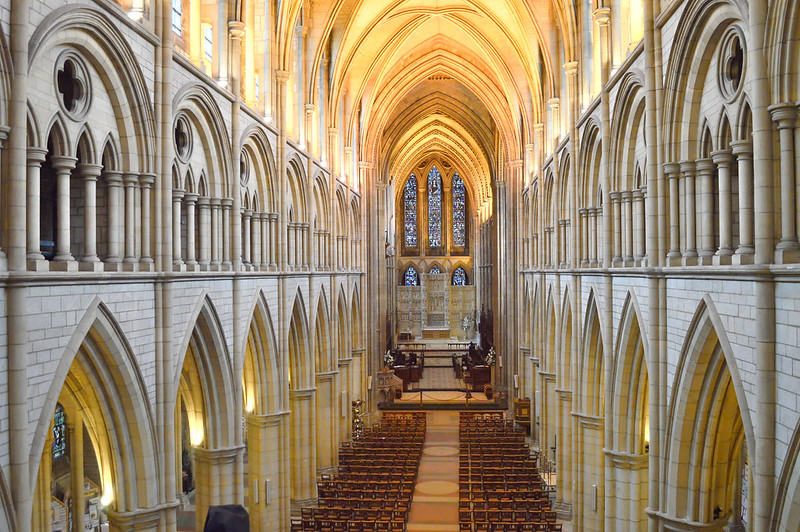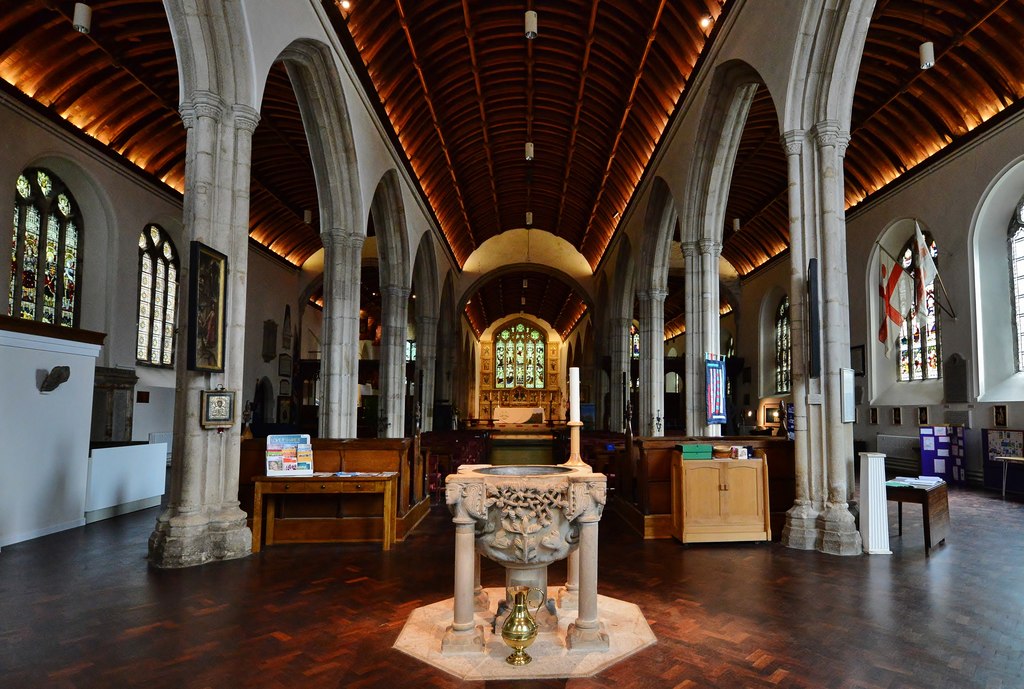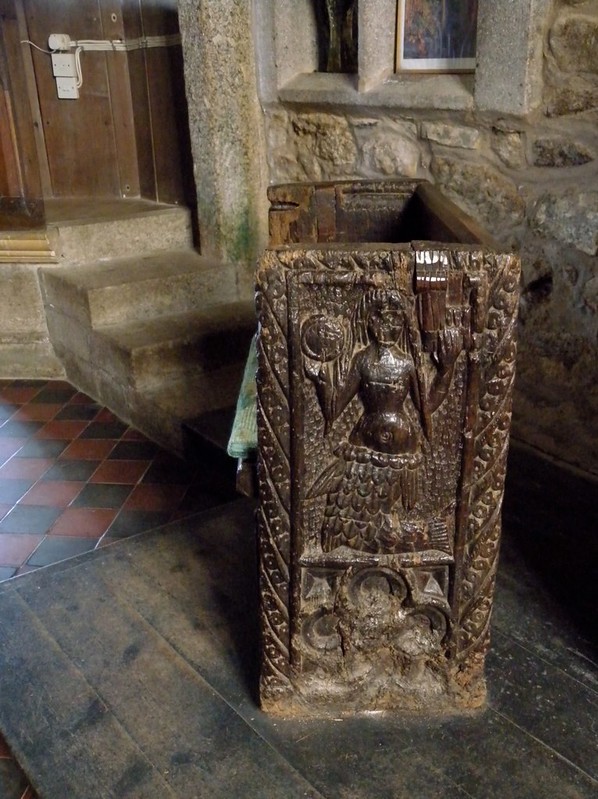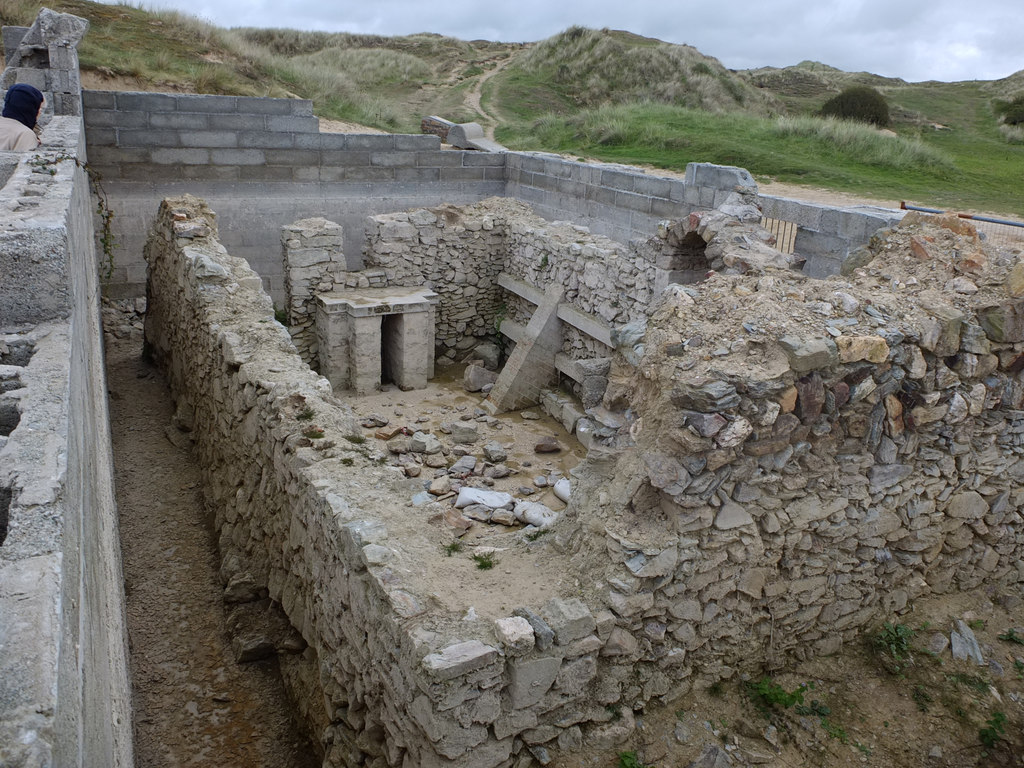
For those who prefer seeking a hidden gem or two, or perhaps are in search of a historical holiday experience, Cornwall is the place to be. Found amongst the rolling countryside and dotted along the dramatic coastline of the county, are some antique gems, the picturesque churches of Cornwall. Below, we’ve picked some of our favourites!
St Petroc’s Church, Bodmin
A church has existed on St Petroc’s site since 540AD, yet the current building dates to 1470, and much of the masonry work which can still be seen today is from the 15th century. At 151ft long and 65ft wide, it is the largest parish church in Cornwall. As you enter the impressive building, the first thing to draw your eyes’ attention is the stained glass window. It features the influential Welsh missionary of the eighth century, St Petroc. It is assumed that St Petroc was born in Wales, yet he carried out much of his religious work in Devon and Cornwall.
During your visit, keep an eye out for the stunning 12th-century font, which is the most elaborate of its kind in Cornwall. The carvings are exquisite, and it is a beautiful focal point of the church.

Truro Cathedral, Truro
Truro Cathedral is one of the youngest entries on the list, and it was built just over 100 years ago, with its completion in 1910. The current structure incorporates the south aisle of the much older, St Mary’s Church, which was previously on the site that the Cathedral now stands.
At the time of construction, the build was considered hugely ambitious. An Anglican cathedral had not been built on a new site since 1220, which was more than 650 years previous to when work began on Truro Cathedral in 1880. The renowned work of the medieval cathedral builders was considered daunting to follow, with their skill and craftmanship difficult to match. As well as this unparalleled comparison that the construction workers had to face, it was also uncertain if there was enough budget for the project to be completed. This financial doubt was made certain when construction was put on hold between 1887 and 1898, and fundraising was required before the build could continue.
Today, and following its completion in 1910, one of the highlights of Truro Cathedral, and the city, is the three dominating spires, which can be seen from many aspects of the city.

CC by JackPeasePhotography
St Senara Church, Zennor
As beautiful as the structure and location of St Senara’s Church is, it is the medieval mermaid carving found on one of the pews at the south side of the chapel that it is famed for. The carving shows a mermaid holding a comb in one hand, and a mirror in the other. The bench was carved to commemorate the tale of the Mermaid of Zennor, a famous Cornish legend about a beautiful mermaid who came to shore and attracted a local man from the village. After following her home from the church, he was not seen again until years later when a fishing ship’s captain was approached by a mermaid, upset that the ship’s anchor was blocking the entrance to her home. The sailors identified the mermaids as the mysterious lady and the missing man!
Depictions of mermaids in churches run deeper than this tale, with other churches in Cornwall also offering images of mermaids. Throughout the medieval period, ‘miracle plays’ were usual at festivities, it was during these, and common Cornish custom, that a mermaid was used to represent Christ. The relation between the two was that the mermaid was as much fish as it was human, and Christ was as much God, as he was a man. This representation was common across Cornwall, and paintings of mermaids can be seen in the churches St Nonna’s and St Breage’s. What makes St Senara’s mermaid carving so special, is that it is the only known surviving example of its kind.

CC by Steve Parker
St Piran’s Oratory, Perranporth
Known as the ‘Lost Church of Perranporth’, St Piran’s is believed to be one of the oldest Christian places of worship in the UK, and the building is said to be more than 1,000 years old. The romance of this religious site is that it has been buried under sand for hundreds of years.
The first excavation was in 1843 and was led by William Haslam. He rebuilt the altar and added a slab which was inscribed with ‘Sanctus Piranus’ (Saint Piran/Pyran, the patron saint of Cornwall). Sadly, following his excavation, the battle with the elements was lost, as the site was filled back in with sand.
It wasn’t until 1910 that it was excavated again, following an appeal to protect the historic building. During this excavation, a concrete structure was added to try and preserve and protect it. There were mixed views on this installation and Dr TG Dexter wrote in 1922, that ‘if the buried church could speak, she would complain bitterly…. of the enthusiasts who have entombed her in that hideous concrete structure’.
In 1980, the decision was made to rebury the site with sand, following frequent flooding and vandalism and it remained in this state until 2014, when excavation began again. Today, it remains unearthed, and visitors can explore the dunes and discover this history-rich gem.

CC by Gary Rogers
Are you a history buff looking to immerse yourself in the antiquity of the county during your Cornwall short breaks? We’d love to know where you’re planning on visiting, and whether or not any of these beautiful churches will be added to your holiday itinerary! Get in touch with us via our social media channels – we’re looking forward to hearing from you!